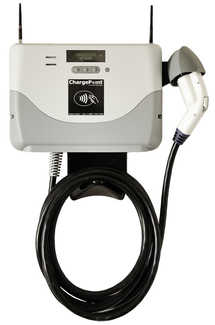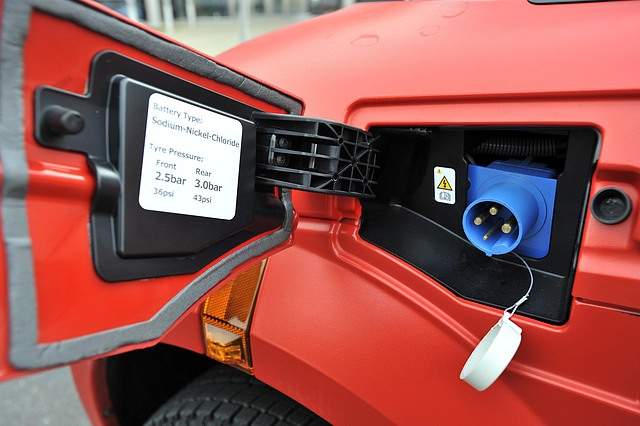One of the most important aspects of electric-car ownership might not be how they drive, or how far you'll go on a charge, but how you'll actually charge it in the first place.
That's why we asked "What comes first, the car or the charger?", with many potential EV owners waiting for a public charging network to appear so they can be sure they'll have somewhere to recharge.
Yesterday we dialed in to a phone conference hosted by the Electric Drive Transportation Association, where representatives from groups including ChargePoint America, ECOtality, the Eaton Corporation and General Motors offered their views on the future of recharging for both the public and businesses alike.
So how will you be charging your own EV? Here we concentrate on home charging - as this will be the place the majority of charging will occur.
Level 1: 120-Volt
There will be three levels of charging. The most basic, level 1, will be the typical 120-volt home system that doesn't necessarily require any special hardware. In essence, your EV can be plugged straight into a normal three-prong wall outlet using a special charging cord.
Every home will have access to such an outlet and it won't need any special installation, nor any electrical safety check. You can hook up your EV and go.
What level 1 charging won't offer is a particularly fast charge. The typical estimate for a car like the 2011 Nissan Leaf is around 8 to 12 hours, which may just about give you 100-percent recharge if you plug in directly after work in the afternoon and don't set off too early the next morning.
Level 1 charging may not be sufficient for more frequent journeys, unless you're using your EV exclusively as a second car and only going on short trips. In this respect, a car like the range-extended 2011 Chevy Volt will be less compromised by the slower charge times.
Level 2: 240-Volt
If you want a quicker charge--and many potential EV owners probably come under this category--then a level 2 charger will likely be for you.

2011 Chevrolet Volt charging port
Level 2 runs at 240 volts and around 30 amps, cutting the level 1 charge time in half as a result. A 4-6 hour charge time becomes suitable for a great many more applications, including commercial as well as personal residential use.
For home usage, you'll have to get a charging system installed by a professional, and the installation will then need to be tested for electrical safety by your local authority.
Steve Schey, director of stakeholder services at ECOtality, tells us that the contractor charged with the installation will request a permit, and once it is granted they will complete the installation, with inspection and approval to follow before you can use the charge point.
Residential level 2 chargers will all be wall-mounted - inside your garage or car port, for example. Some customers will be lucky enough to have one installed for them: GM, for example, will soon announce their partner in a home-charging setup program. Clean energy company ECOtality will provide 8,300 free level 2 chargers as part of a large study into electric vehicle usage trends.
We asked the company representatives in the EDTA conference how much customers should expect to pay to get a level 2 charger installed in their homes. Steve Schey told us the chargers they offer retail at $1,195 (you can find more about these on their charging network website blinknetwork.com).

Coulomb Technologies CT-500 electric vehicle charging station
Mike Dixon of Eaton Corporation said that their chargers were similarly priced, and although ChargePoint America don't have prices on their units as of yet, their own project sponsored by Coulomb Technologies will be providing 5,000 free CT500 Level 2 chargers in nine metropolitan areas.
This project will be conducted through their automotive partners, who include Ford for their Transit Connect EV and upcoming 2012 Focus EV, Chevrolet with the 2011 Volt, and Smart with the 2011 ForTwo Electric Drive.
Level 3: High voltage
The quickest charge available at the moment is through a level 3 fast charger. These will largely be used in locations where a quick charge time is of the essence, such as gas stations, rest stops and malls.
A fast charger running on 50 to 500 Volt DC current at over 100 Amperes can provide 80 percent charge in as little as 15-30 minutes. This should allow you to go on a longer journey with minimum disruption, and time comfort breaks with a quick recharge.
Most current EVs will be fast-charge compatible, though it's worth noting that the 2011 Chevy Volt isn't yet one of those cars. You'd be hard pressed to view this as a bad thing, though, given that the Volt uses a range-extending gasoline engine to provide its full range.
We aren't aware what a level 3 charger for the home might cost you, but expect it to be significantly more than the cost of a level 2 charger.
Which one for you?

Charging Port: Think City.
Everyone has access to a level 1 charger, but we suspect that it might only be suitable for consumers who do very few miles in their EV, for mainly social or recreational use. Short, infrequent trips won't be hindered by the long charge times.
Most EV buyers are more likely going to upgrade to level 2, which proves a cost-effective compromise. The 4-6 hour charge time is easily quick enough for an overnight charge leaving you with 100% at the start of every day, and should your workplace have these installed you'll find your battery at 100% by the end of the working day, too.
Level 2 might still be inconvenient for longer trips, but if your round-trip each day is less than the 100-mile range many EVs manage, then a level 2 charger could be just what you're after. For a lucky few taking part in trials, the installation might even be free.
You're more likely to find level 3 chargers when you're out and about, as having one fitted at home will require significant electrical upgrades to your home. However, with improvements in the technology of both chargers and batteries, the short charging times may soon be more accessible to all.













